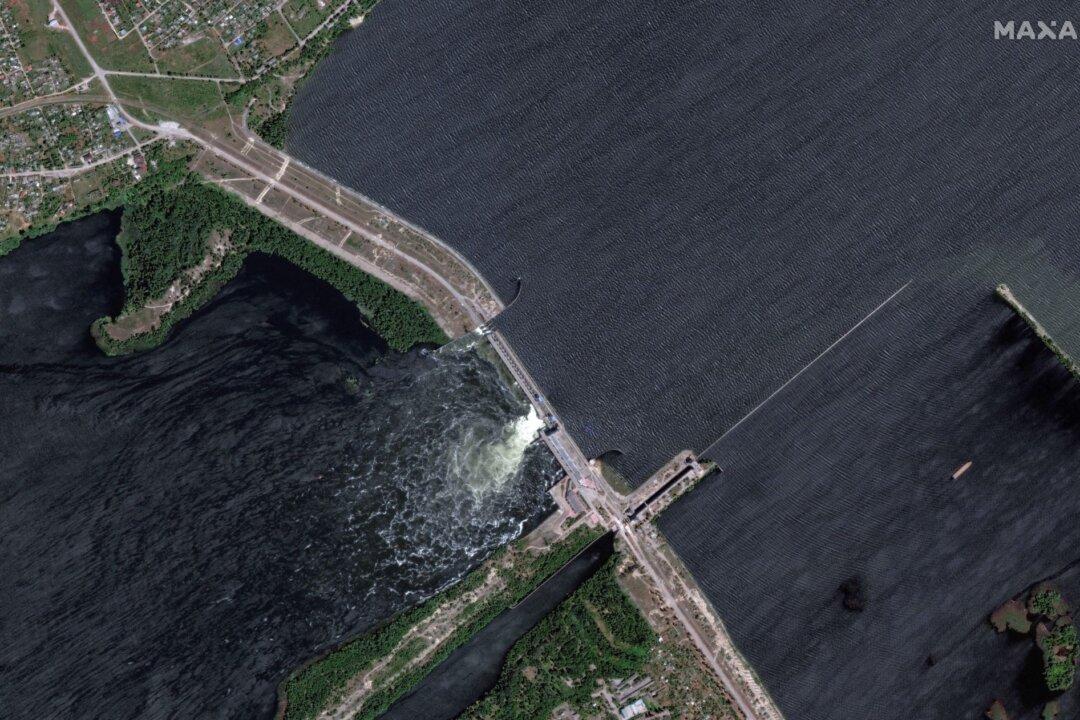Ukraine has blamed Russian forces for blowing up the dam of the Kakhovka Hydroelectric Power Plant on the Dnipro River in Russian-occupied southern Ukraine.
The Nova Kakhovka dam—which holds the same amount of water as the Great Salt Lake in the U.S. state of Utah—was destroyed in the early hours of June 6, sending millions of liters of water bursting through a gaping hole.





